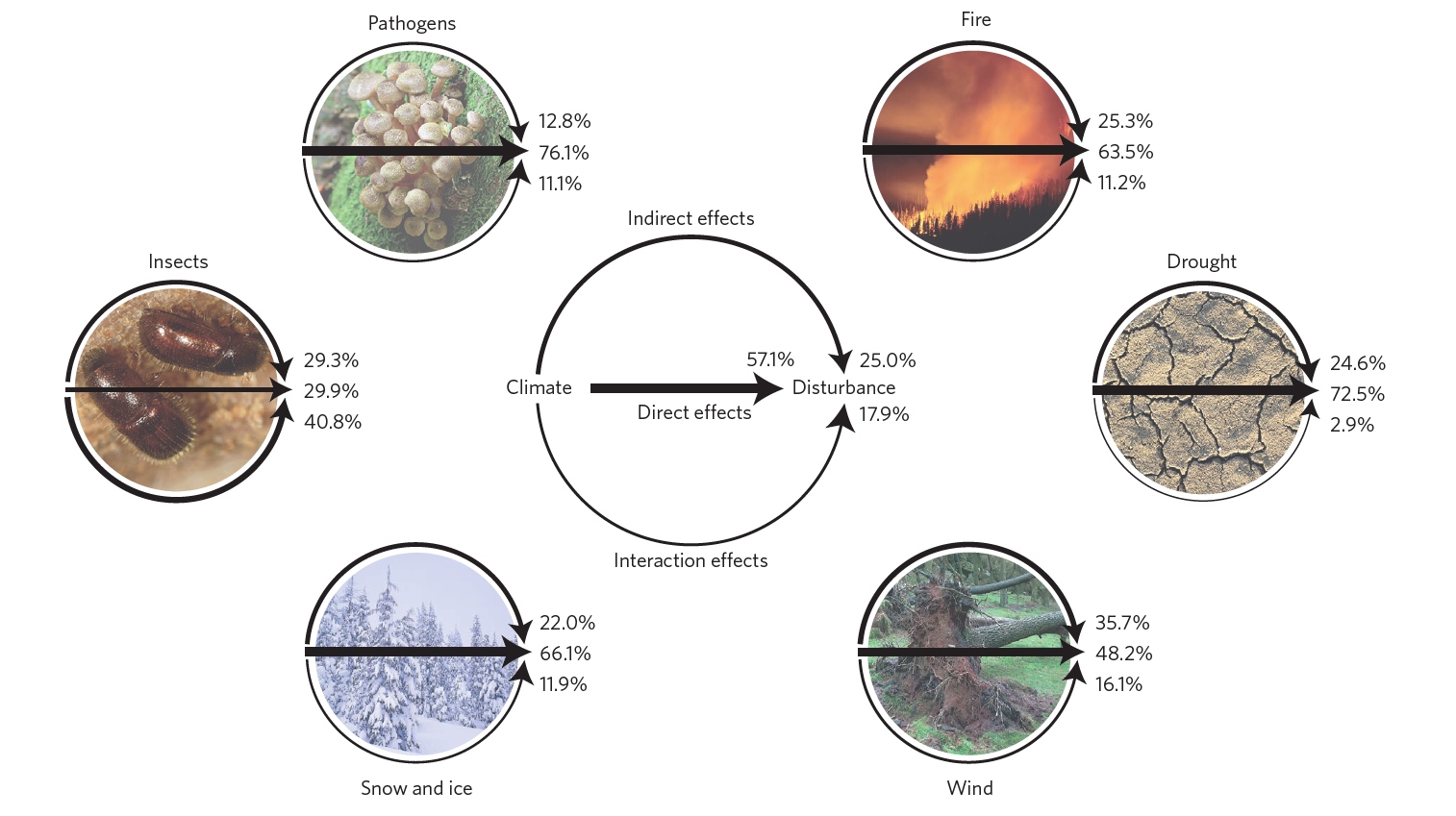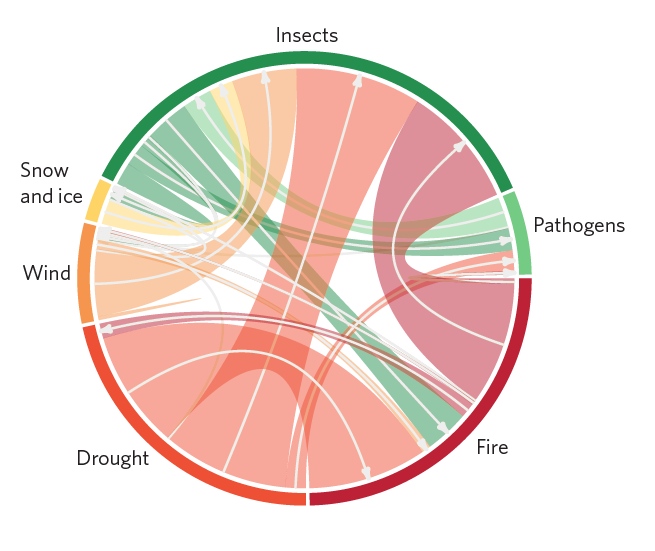Global synthesis on forest disturbances under climate change
A comprehensive synthesis, recently published in Nature Climate Change, suggests that climate change alters forest disturbance regimes at the global scale.
Forest disturbances are sensitive to changes in the climate system. In a paper recently published in Nature Climate Change a group of authors led by the RESIN PI Rupert Seidl have now provided the first comprehensive synthesis of climate change effects on a wide range of abiotic (fire, drought, wind, snow and ice) and biotic (insects and pathogens) disturbance agents.

The study highlights that climate can influence forest disturbances through three major pathways. Direct effects are the immediate impacts that changes in the climate system, such as an increased frequency of climatic extremes (e.g., stronger winds or longer periods without precipitation), have on the disturbance regime. But also indirect effects of climate change exist, e.g., when a changing climate alters the structure and composition of a forest, which in turn modified its susceptibility to disturbance. Finally, individual disturbance agents do not respond to climate in isolation, but they frequently interact with other disturbances. Consequently, a climate-mediated change in one disturbance agent could also affect other disturbance agents, and have ripple effects through the system.

The global review of climate effects on forest disturbances was based on 674 papers published in the peer-reviewed literature since 1990. It provides evidence that warmer and drier conditions particularly facilitate fire, drought, and insect disturbances, while warmer and wetter conditions increase disturbances from wind and pathogens. Widespread interactions between agents are likely to amplify disturbances, while indirect climate effects such as vegetation changes can dampen long-term disturbance sensitivities to climate. Future changes in disturbance are likely to be most pronounced in coniferous forests and the boreal biome. The study concludes that both ecosystems and society need to prepare for an increasingly disturbed future of forests.